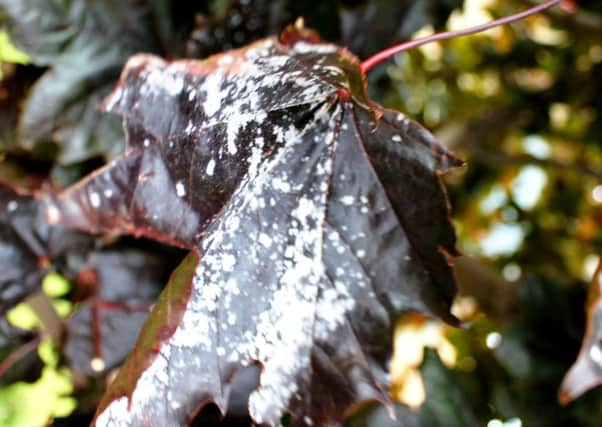Purple patch blight


What looked fine and dandy for the first few months of the year is beginning to look very vulnerable to an annoyingly persistent and disfiguring disease.
All those lovely purple leaves could very soon appear to have been dusted with flour, and as the seasons progresses, things could get worse.
Advertisement
Hide AdAdvertisement
Hide AdThe problem is powdery mildew, a common fungal disease characterized by a white, powdery coating on leaves. Sometimes those leaves may turn yellow, drop early, or become twisted, but normally the damage is just visual.
Plants with purple leaves often appear the worst affected because the white mildew shows up more on dark foliage, but the disease can also attack green-leaved plants.
Most powdery mildew fungi have a host range restricted to a relatively few, related plants, but these can include wild relatives which can be sources of infection – for example, wild crab apples may be sources of infection for apple orchards.
Powdery mildew usually appears in summer during warm, humid weather, particularly if the nights are cool. This year, because of some good weather during June and July, the problem doesn’t seem to be quite as bad as it was last year. But there is still plenty of time for things to change.
Advertisement
Hide AdAdvertisement
Hide AdAlthough the mildew is unsightly, the damage caused by the disease is rarely severe. Fungicides can be applied when you see the first signs of the mildew on the leaves, but it’s probably best just to let the disease run its course.
And it’s advisable not to apply any nitrogen-rich fertilizer to trees and shrubs which have purple leaves – it will encourage more foliage, which, in turn, could be a target for powdery mildew.
A more proactive approach to the problem is to destroy fallen infected leaves in autumn. This will reduce the amount of infectious spores next spring. Mulching and watering also reduces water stress and helps make plants less prone to infection. Promptly pruning out infected shoots will reduce subsequent infection.
Other than that, there’s not a lot that can be done; powdery mildew is just one of those things which thrives in the British climate. So blame the weather.